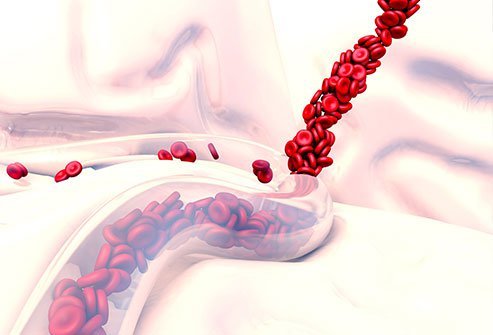To tell if a dog is bleeding internally, look for symptoms such as pale gums, abdominal pain, weakness, and rapid breathing. Internal bleeding in dogs can be life-threatening, so immediate veterinary attention is crucial.
Every pet owner dreads the thought of their beloved furry friend experiencing any sort of injury or illness. And when it comes to internal bleeding in dogs, the situation becomes even more concerning. Spotting the signs of internal bleeding in dogs is vital for their well-being, as it can be a life-threatening condition if left untreated.
Whether caused by trauma, a medical condition, or even ingestion of certain toxins, internal bleeding requires immediate veterinary attention. We will explore the indicators that can help you identify if your dog is bleeding internally, enabling you to take swift action and potentially save their life. Stay tuned to learn the key symptoms and appropriate steps to ensure the well-being of your four-legged companion.

Credit: thistlelaw.com
Understanding Internal Bleeding
Internal bleeding in dogs can be difficult to detect, but understanding its definition and causes is crucial. It occurs when blood leaks from blood vessels or organs within the body. Common causes of internal bleeding in dogs include trauma, such as being hit by a car or falling from a height, as well as certain diseases like hemophilia or cancer.
There are different types of internal bleeding that can occur, such as gastrointestinal bleeding, splenic bleeding, or cranial bleeding. Detecting internal bleeding early is of utmost importance as it can be life-threatening if left untreated. Look for signs such as pale gums, weakness, rapid breathing, or a distended abdomen.
If you suspect internal bleeding, seek immediate veterinary attention to ensure your dog receives the necessary treatment. Identifying and addressing internal bleeding promptly can greatly improve your dog’s chances of recovery.
Silent Signs Of Internal Bleeding In Dogs
Silent signs of internal bleeding in dogs can include pale gums with white or bluish coloration. Other indicators may include weakness and lethargy, as well as a rapid heart rate and breathing. Abdominal distention and pain could also be a sign of internal bleeding.
Keep an eye out for blood in your dog’s stool or urine, and be cautious if you notice them vomiting blood or a coffee-ground-like material. It’s important to pay attention to these subtle but crucial signs to catch any potential internal bleeding in dogs early on.
Regular check-ups with a veterinarian can help detect any underlying health issues and ensure your dog’s well-being.
Steps To Take If You Suspect Internal Bleeding
Suspecting internal bleeding in a dog is a serious matter that requires immediate action. If you notice any symptoms indicating internal bleeding, it is crucial not to delay seeking veterinary assistance. Safely transport your dog to the veterinary clinic as quickly as possible.
Once there, provide the veterinarian with detailed information about your dog’s symptoms and medical history. The more information you can provide, the better equipped the vet will be to diagnose and treat your dog. Internal bleeding can be life-threatening, so prompt action is essential.
By following these steps and seeking timely veterinary help, you can ensure the best possible care for your furry friend.
Conclusion
Recognizing the signs of internal bleeding in dogs is crucial for their well-being and prompt medical intervention. By observing your dog’s behavior, such as weakness, pale gums, vomiting, or swollen abdomen, you can detect potential internal bleeding. It is essential to remember that these symptoms may vary depending on the severity and location of the bleeding.
Seeking immediate veterinary attention is vital if you suspect internal bleeding in your dog. Remember that prevention is key, and keeping your dog away from potentially dangerous situations can help minimize the risk of internal injuries. Regular check-ups with your vet and being aware of any changes in your dog’s behavior or health can prevent complications from worsening.
By ensuring your dog’s safety and being attentive to any signs of internal bleeding, you can ensure their well-being and happiness for years to come.
